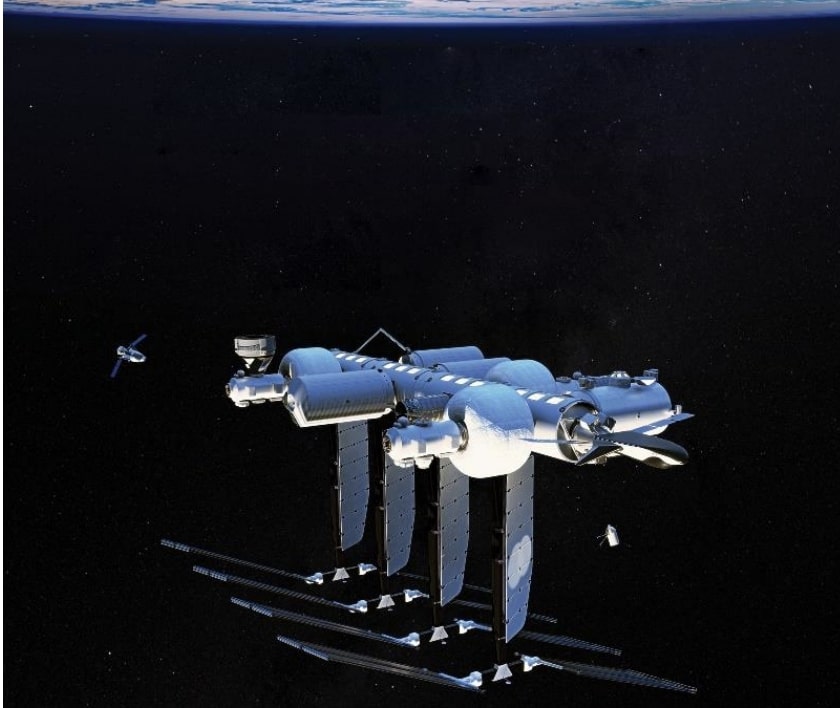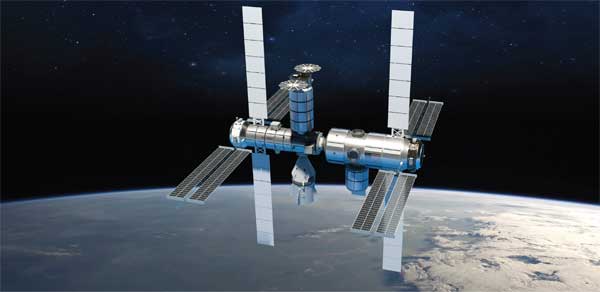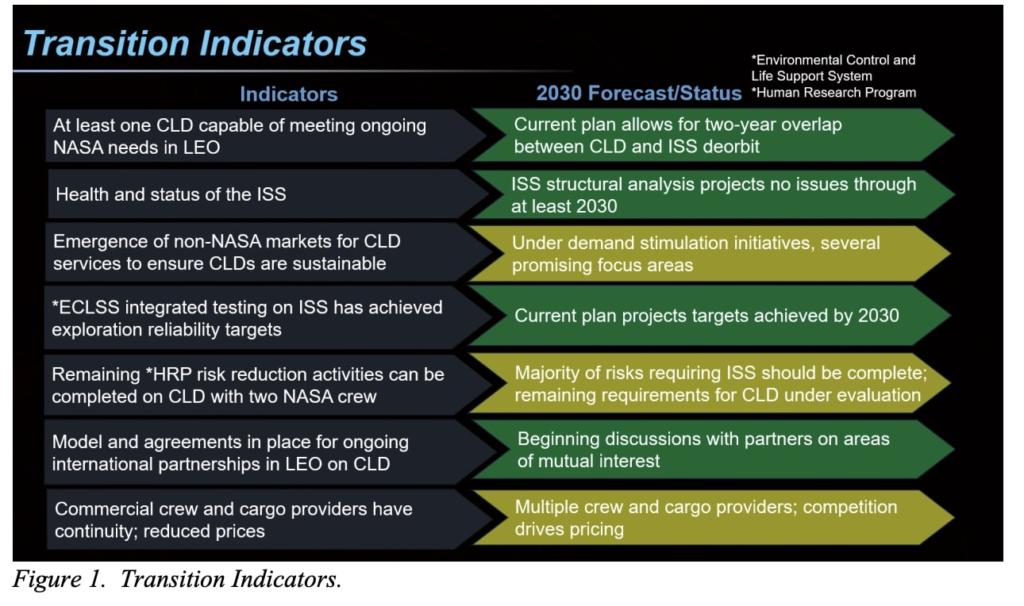In December 2021, NASA awarded a total of $415 million to three companies — Blue Origin, Nanoracks and Northrop Grumman — that are leading efforts to build private space stations in Earth orbit. NASA’s agreements with Blue Origin, Nanoracks, Northrop Grumman and Axiom represent the first phase of a planned two-phase effort to spur the development of commercial low-Earth orbit destinations (CLD) during the 2020s. The first phase is expected to continue through 2025. The second phase in this plan will be similar to the approach NASA has taken with private crew transportation services to and from the ISS. NASA paid billions to SpaceX and Boeing to develop crew launch capability and for launch services. In May 2022, SpaceX has just been given a five-manned launch extension.
NASA has a separate agreement with Houston-based company Axiom Space, which will launch multiple modules to the International Space Station (ISS) starting in late 2024. These modules will eventually detach from the orbiting lab, forming a privately operated “free flyer” in orbit.
Nanoracks Plan
Nanoracks, in collaboration with Voyager Space and Lockheed Martin [NYSE: LMT], has formed a team to develop the first-ever free flying commercial space station. The space station, known as Starlab, will be a continuously crewed commercial platform, dedicated to conducting critical research, fostering industrial activity, and ensuring continued U.S. presence and leadership in low-Earth orbit. Starlab is expected to achieve initial operational capability by 2027. Nanoracks has been awarded $160 million by NASA to start developing their space station plan. The rendering at the top is the current notional Nanorack station design.
The basic elements of the Starlab space station include a large inflatable habitat, designed and built by Lockheed Martin, a metallic docking node, a power and propulsion element, a large robotic arm for servicing cargo and payloads, and a state-of-the-art laboratory system to host a comprehensive research, science, and manufacturing capability. Starlab will be able to continuously host up to four astronauts for conducting critical science and research.
Axiom Space
Axiom Space is putting the first pieces of fabricated flight hardware together. In early 2023, the assembled module will move to Houston where they will complete final assembly and integration to prepare for a late 2024 launch of the first section of the next-generation platform for breakthrough innovation in low-Earth orbit.

Blue Origin Orbital Reef
Blue Origin has received $130 million from NASA to develop the Orbital Reef.
In the second half of this decade, Blue Origin plans the Orbital Reef space station to start operating as a mixed-use business park, providing straightforward access for all. Orbital Reef will fly over most of humankind in a mid-inclination, 500-kilometer orbit. Now anyone can lease access to the space environment – weightlessness and hard vacuum – and experience breathtaking views of our home planet, with 32 vibrant sunrises and sunsets each day.
Blue Origin plans to provide an end-to-end service: transportation and logistics, leased space for any purpose, assistance with system hardware development, robotic and crew-tended operations and servicing, and habitation amenities. Experienced customers can simply link up their own modules through standard interfaces. Novice customers can get any level of help they need through the Reef Starter incubator. Station infrastructure – accommodations, utilities, berths, and vehicle ports – scales with market demand for unlimited growth.
On the Orbital Reef business park, shared infrastructure supports the proprietary needs of diverse tenants and visitors. This business model – traditional on Earth but unprecedented in space – lowers barriers for all customers and promotes competitive development of space applications. The Baseline Configuration has separate science and habitation zones and supports 10 people in
830 m3 of volume – almost as much as the ISS – in big modules with big windows.

Grumman Plan
Grumman and Dynetics are working on a space station. The free flyer commercial destination design will provide the base module for extended capabilities including science, tourism, industrial experimentation, and building of infrastructure beyond initial design. Building on Northrop Grumman’s commercial spacecraft experience with the Cygnus spacecraft and the Mission Extension Vehicle (MEV) as well as the in-production Habitation and Logistics Outpost (HALO). The proposal by NG Space is not as ambitious in scope as those from Blue Origin and Nanoracks, since it proposes both smaller payload volume and habitable volume. They only plan to reach the Preliminary Design Review (paper study phase) at the end of the current $125 million in funding.

NASA Transition through 2030
NASA has said that it wants at least one of these private outposts to be up and running before the ISS is decommissioned.
NASA has a 24 page International Space Station Transition Report.
NASA has signed agreements with three U.S. companies (Blue Origin of Kent, Washington; Nanoracks LLC of Houston, Texas; and Northrop Grumman Systems Corporation of Dulles, Virginia) to develop commercial destinations in space that go directly to orbit, i.e., free-flyers. The awards, along with the Axiom concept, are the first part of a two-phase approach to ensure a seamless transition of activity from the ISS to commercial destinations. During this first phase, private industry, in coordination with NASA, will formulate and design CLD capabilities suitable for potential Government and private sector needs. The first phase is expected to continue through 2025. For the second phase of NASA’s approach to a transition toward CLDs, the Agency intends to certify for NASA crew member use CLDs from these and potential other entrants, and ultimately, purchase services from destination providers for crew to use when available.
In January 2020, NASA signed a contract with Axiom Space for the use of the forward Node 2 port on ISS, on which they will deploy a commercial module in the mid-2020s. This module will support private activities in LEO that could otherwise not be accomplished on the Government-owned ISS, testing technology and a business plan for commercial platform operations. Axiom plans to add more modules to this complex with the eventual aim of detaching from the ISS and becoming a free-flying destination in LEO.
After Axiom, Blue Origin, Nanoracks, and Northrop Grumman have matured their designs and business models over the next 3-4 years, NASA intends to have a second phase of activity whereby the Agency contracts with one or more entities to certify their designs as safe and to purchase services from the CLD provider(s). This second phase, which will be a full and open competition, is similar to the Commercial Crew transportation Capabilities (CCtCap) contracts NASA awarded to SpaceX and Boeing for the Commercial Crew Program. Thus, the Agency is building on the successful legacy of our commercial crew and cargo programs that are currently delivering important research, supplies, and NASA and international partner astronauts to the ISS.


Goals through 2030:
• Create a robust commercial LEO marketplace by enabling the development of commerciallyowned and -operated LEO destinations and associated research capabilities that are safe, reliable,
and cost-effective and allow NASA to be one of many customers;
• Ensure NASA can meet its needs in LEO, as it transitions from ISS operations to new CLDs that are commercially-owned and -operated;
• Drive down costs so NASA can free resources to be used for future human space exploration on its Artemis missions to the Moon and on to Mars as well as on other missions; and
• Utilize innovative, nontraditional arrangements for acquiring commercial space goods and services to meet NASA requirements.
Implementation Strategies through 2030:
• Support the development of CLDs through the Commercial LEO Development Program supply strategy;
• Create research/applications roadmaps for promising areas and develop strategies and partnerships to advance activities on roadmaps; continue demand stimulation activities for inspace production activities, partnering with other Government agencies to co-fund areas of intersecting interests;
• Continue using ISS to grow commercial interest and markets by facilitating commercial activities, including Private Astronaut Missions; and
• Use or create expanded procurement approaches to drive the transition of Government purchasing towards procurement of commercial services, including research facilities on CLDs.
The Post-ISS Plan:
• One or more CLDs are available to meet forecasted needs;
• Cost of LEO services to NASA is significantly reduced;
• Commercial demand for tourism, in-space manufacturing, and other activities supplements business for CLDs beyond U.S. Government needs; and
• Multiple commercial crew and cargo transportation and research capability providers exist.

Brian Wang is a Futurist Thought Leader and a popular Science blogger with 1 million readers per month. His blog Nextbigfuture.com is ranked #1 Science News Blog. It covers many disruptive technology and trends including Space, Robotics, Artificial Intelligence, Medicine, Anti-aging Biotechnology, and Nanotechnology.
Known for identifying cutting edge technologies, he is currently a Co-Founder of a startup and fundraiser for high potential early-stage companies. He is the Head of Research for Allocations for deep technology investments and an Angel Investor at Space Angels.
A frequent speaker at corporations, he has been a TEDx speaker, a Singularity University speaker and guest at numerous interviews for radio and podcasts. He is open to public speaking and advising engagements.

